Last night, I had the urge to prepare one of the poached salmon dishes I made over a year ago, but I didn’t want to make it the same exact way as I did previously. One of the most prominent aspects of the previous dish was the use of lemons as part of the poaching combination. Since we already tried the lemons, and since we had a beautiful pink grapefruit on hand, I decided to go ahead and make a quick substitution. It was sort of an experiment. I’m happy to report that things worked out and that the poached salmon dish was delicious. The pink grapefruit was just sweet and acidic enough to offer some true distinction from all the other ingredients.

The Recipe
This recipe is a winner. It’s almost an exact duplicate of the first one I prepared and that one was one of the best salmon dishes I ever tasted. If you’re not into grapefruit, but don’t mind lemon, simply follow all the instructions I give below, but use lemon in the poaching skillet instead of the grapefruit. Really, either way is great.
Poaching salmon is one of the best methods of preparation. The fish comes out extremely tender, if you don’t overcook it. If you do overcook it, it can be dry, so be sure to watch the timer during that part of the preparation.
The seasoning in this dish is quite straightforward, so there’s nothing complicated. Also, if you haven’t poached before, don’t worry about. It’s easy and I’ll explain everything below.
Overall, this is an incredible dish that will give you lots of flavor and a very tender bite on your fork. It’s definitely one of my favorites.
Ingredients
Serves: 4
1 Bunch Parsley, Stemmed and Chopped
1 Small Vidalia Onion, Chopped
4 8 Ounce Skinless Salmon Fillets
1 Tablespoon Dry Tarragon
4 Slices Pink Grapefruit, 1/2 Inch Thick
1/2 Cup Dry White Wine
1/2 Cup Water
2 Tablespoons Capers
2 Tablespoons Honey
4 Tablespoons Extra-Virgin Olive Oil
Salt
Ground Black Pepper
Step-by-Step Instructions
I believe I got this recipe originally from America’s Test Kitchen. If that ends up being the case, I’d like to use this opportunity to thank them for their efforts. While I did mix this recipe up a bit and swap some ingredients for others, they were certainly my inspiration.
Prep the Ingredients
It’s smart to prep as much as you can before beginning anything else, so that’s what I did. I first stemmed all the parsley and chopped up the leaves. I kept all parts of the parsley.
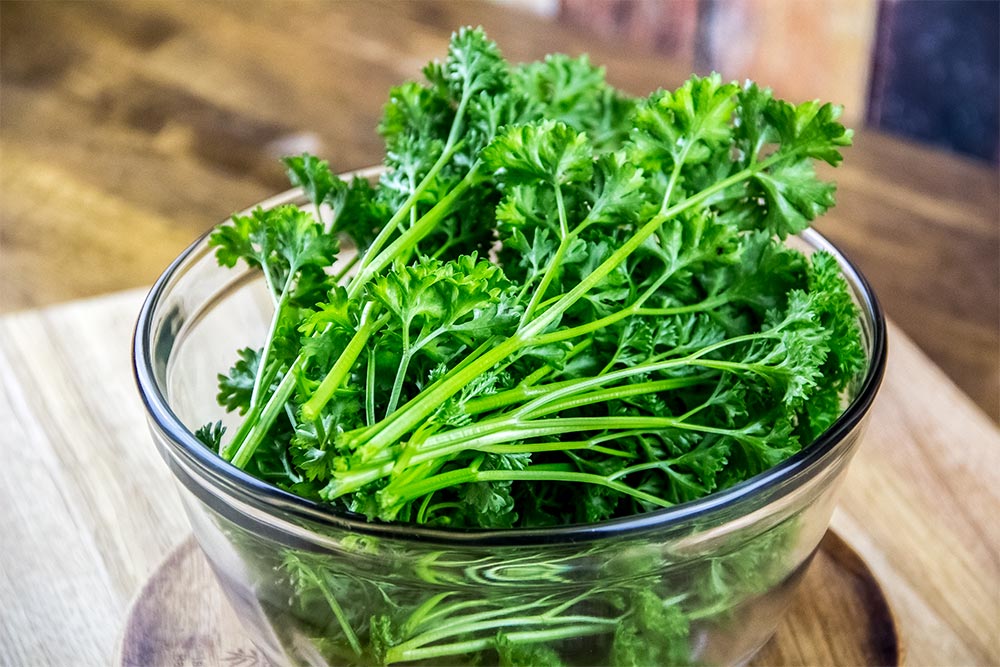
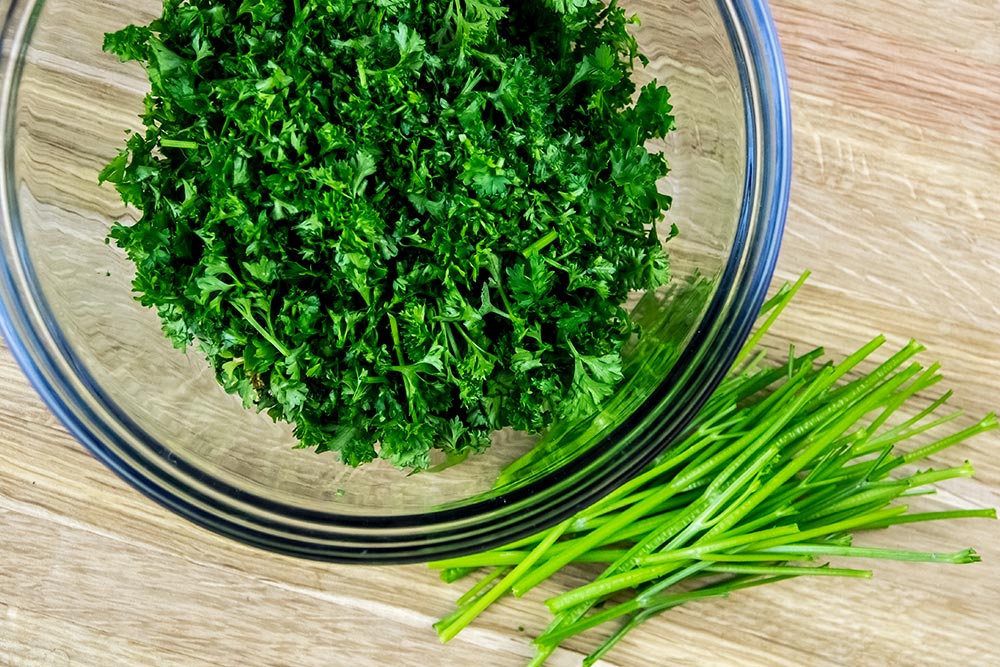
After that, I chopped the onion.
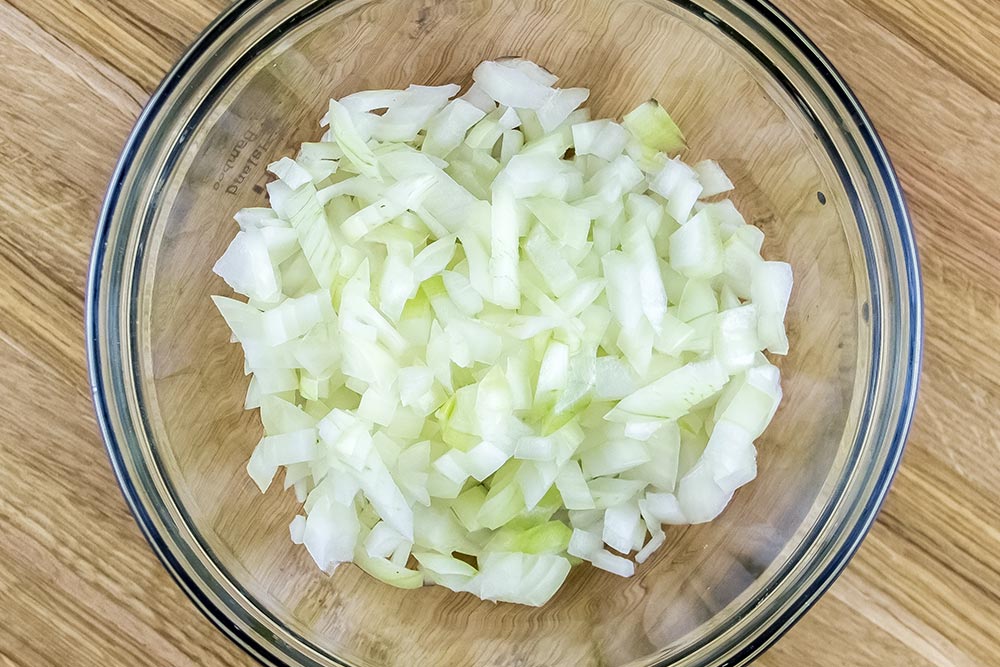
Then, I measured out the tarragon and the capers.

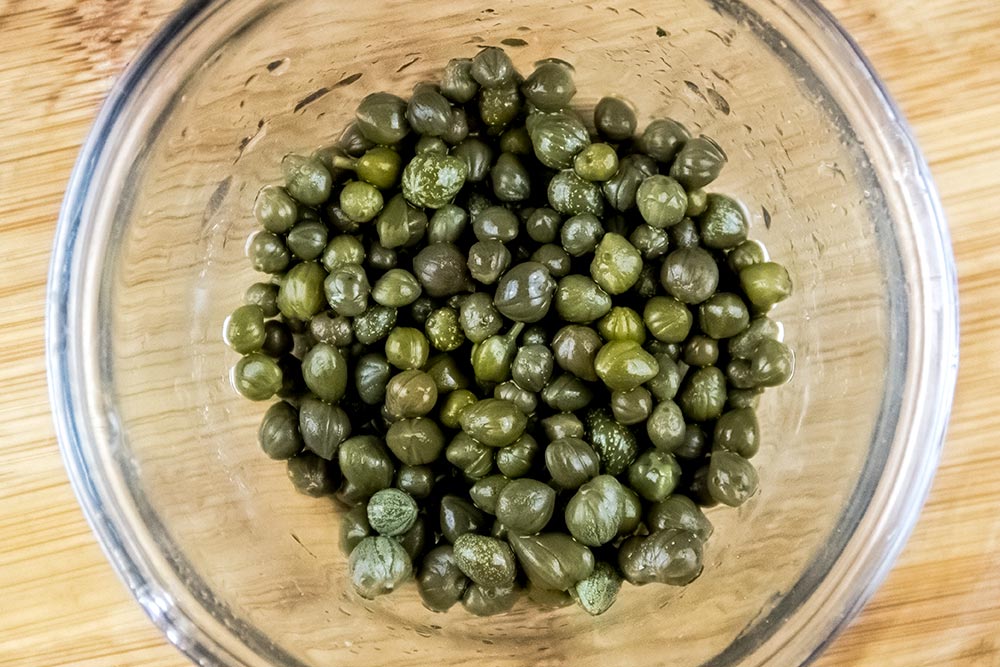
And finally, I skinned the salmon fillet and cut it into pieces.
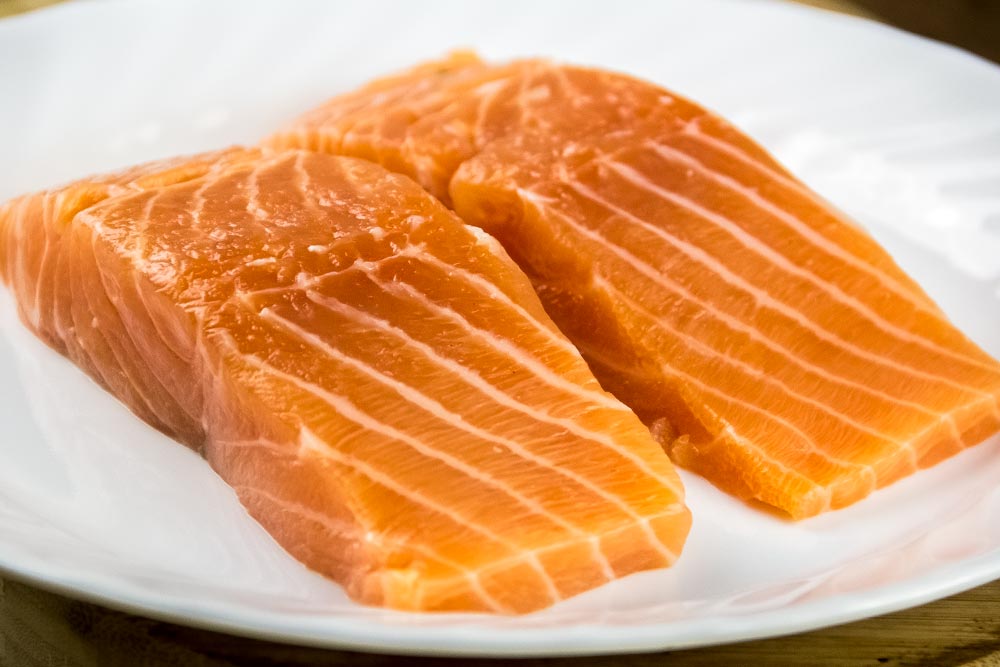
I also cut the slices of grapefruit, but I didn’t get a photo of just them. You can see them in the next few pictures.
Arrange Ingredients in Skillet
You’ll need to place come ingredients into a large skillet to place the salmon on top of. First, arrange the four slices of grapefruit in the pan. Then, spread the parsley stems on top of them. After that, spread half of the chopped onion out and then add the water and wine. Your pan should look like the photo below.
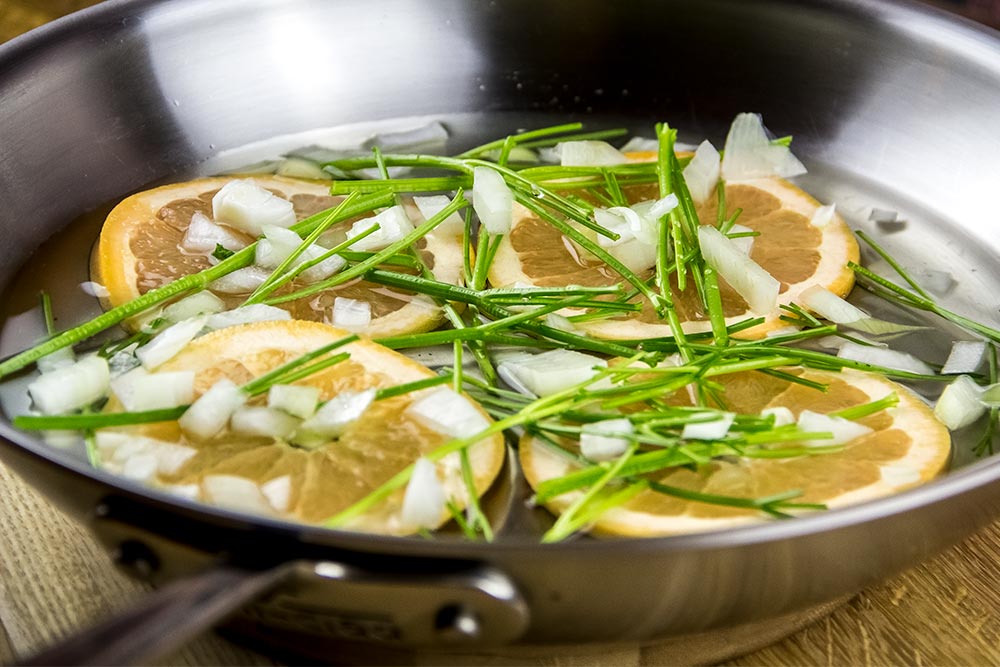
After that’s done, place the salmon on top of everything. I made this dish for two. You’ll be putting all your salmon in the same skillet.
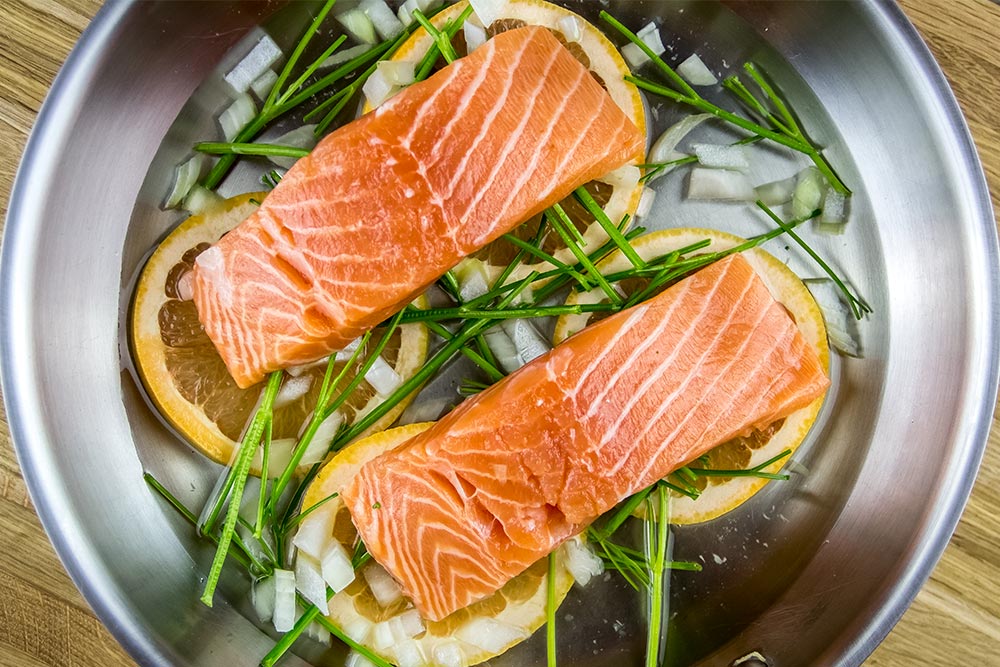
Poach the Salmon
Bring the liquid in the skillet to a boil over high heat on your stove top. Right when it begins to boil, cover the pan and set your timer for 10 minutes. Turn the heat to low and let the salmon poach.
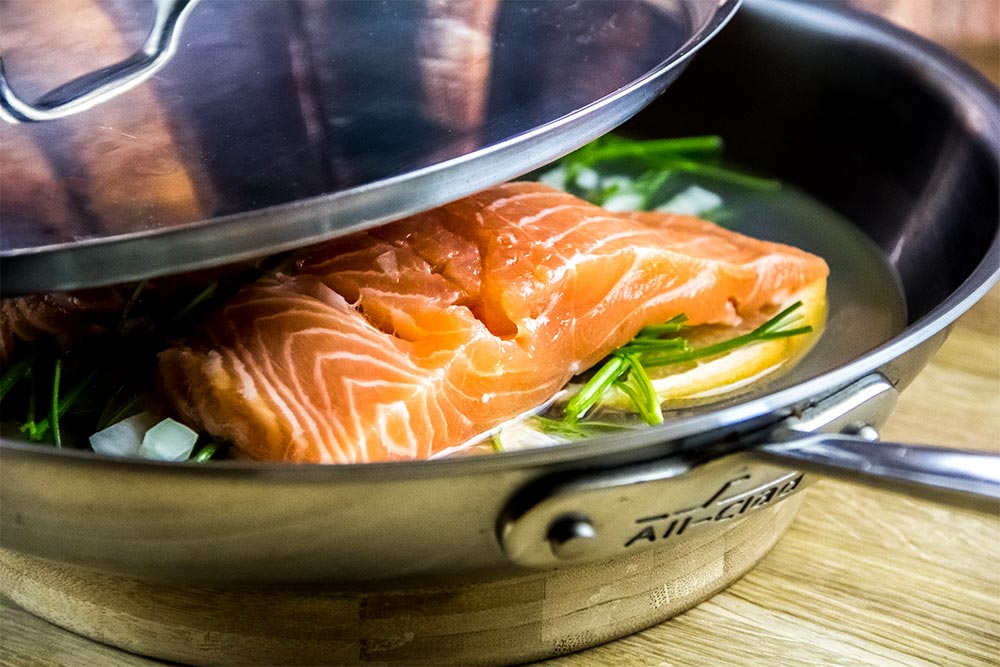
When the salmon is finished poaching, it should look like the photo below.

Season each fillet with salt and pepper.
Prepare the Topping
While the salmon is cooking, go ahead and put the topping together. Place the chopped parsley in a medium sized bowl. Then, add in the remainder of the chopped onion, tarragon, capers, olive oil, honey, a pinch of salt and a pinch of pepper to that bowl as well. Mix everything together.
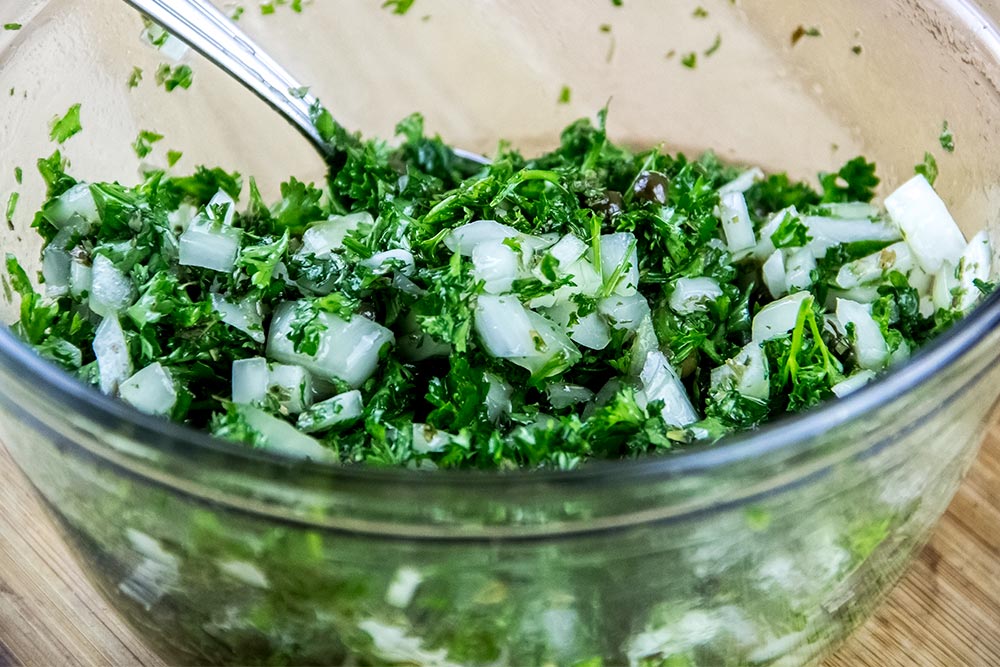
Reduce Liquid & Plate
After the salmon is finished poaching, go ahead and plate each fillet, making sure to keep the ingredients underneath each one intact. When everything but the liquid is removed from the skillet, bring that remaining liquid to a boil over high heat. When it’s reduced by half, turn off the heat and add the reduction to the bowl with the topping in it. Then, mix everything well and divide the topping between each piece of salmon. Serve while hot.
The Final Poached Salmon Dish
As you can imagine, this is an elegant and tasty dish. Really, all the steps are very straightforward. The primary concern you’ll likely have is how tender the salmon is. The last time I made this dish, I poached for 11 minutes exactly and it was the best piece of salmon I ever tasted. This time, I only poached for 10 minutes and it was just as good. If you make this dish part of your diet, which you should, you’ll get a feel for the best time. Anyway, if you do decide to give this a try, please let me know how it turns out in the comment section below. Thanks for reading!
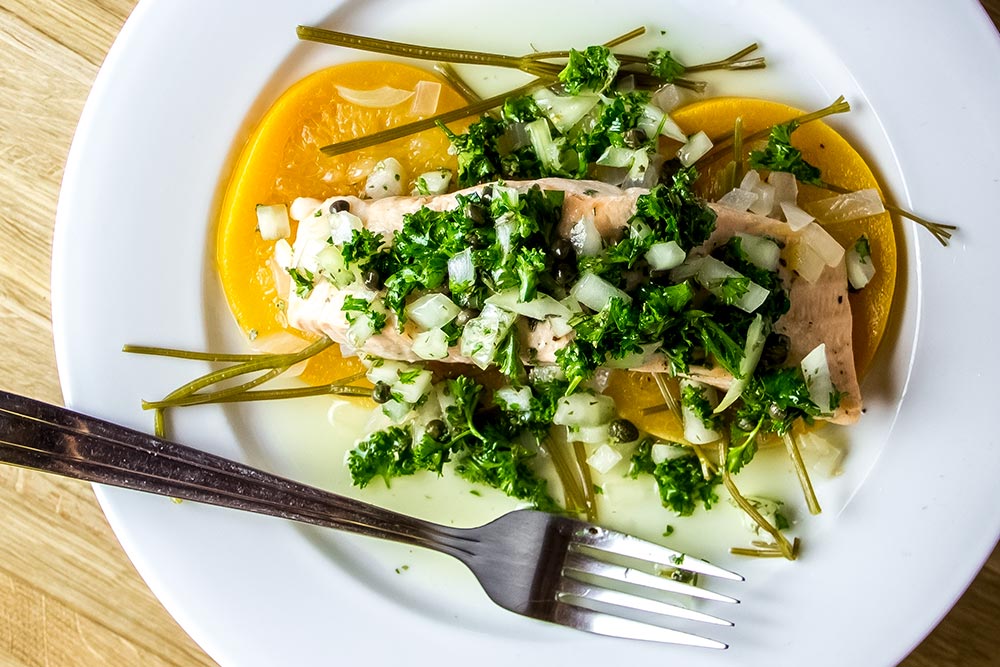
Leave a Reply